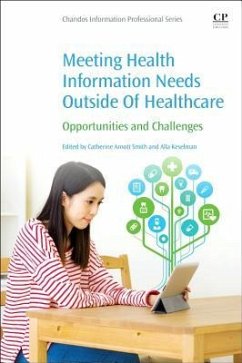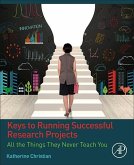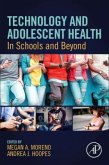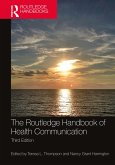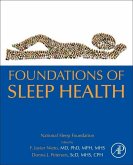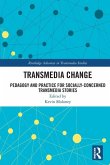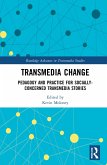Catherine Arnott Smith, Alla Keselman
Meeting Health Information Needs Outside of Healthcare
Opportunities and Challenges
Catherine Arnott Smith, Alla Keselman
Meeting Health Information Needs Outside of Healthcare
Opportunities and Challenges
- Broschiertes Buch
- Merkliste
- Auf die Merkliste
- Bewerten Bewerten
- Teilen
- Produkt teilen
- Produkterinnerung
- Produkterinnerung
Meeting Health Information Needs Outside of Healthcare addresses the challenges and ethical dilemmas concerning the delivery of health information to the general public in a variety of non-clinical settings, both in-person and via information technology, in settings from public and academic libraries to online communities and traditional and social media channels.
Professionals working in a range of fields, including librarianship, computer science and health information technology, journalism, and health communication can be involved in providing consumer health information, or health…mehr
Andere Kunden interessierten sich auch für
![Keys to Running Successful Research Projects Keys to Running Successful Research Projects]() Katherine ChristianKeys to Running Successful Research Projects63,99 €
Katherine ChristianKeys to Running Successful Research Projects63,99 €![Technology and Adolescent Health Technology and Adolescent Health]() Technology and Adolescent Health112,99 €
Technology and Adolescent Health112,99 €![The Routledge Handbook of Health Communication The Routledge Handbook of Health Communication]() The Routledge Handbook of Health Communication127,99 €
The Routledge Handbook of Health Communication127,99 €![Foundations of Sleep Health Foundations of Sleep Health]() Foundations of Sleep Health148,99 €
Foundations of Sleep Health148,99 €![Pharmacy Practice Research Case Studies Pharmacy Practice Research Case Studies]() Pharmacy Practice Research Case Studies111,99 €
Pharmacy Practice Research Case Studies111,99 €![Transmedia Change Transmedia Change]() Transmedia Change42,99 €
Transmedia Change42,99 €![Transmedia Change Transmedia Change]() Transmedia Change152,99 €
Transmedia Change152,99 €-
-
-
Meeting Health Information Needs Outside of Healthcare addresses the challenges and ethical dilemmas concerning the delivery of health information to the general public in a variety of non-clinical settings, both in-person and via information technology, in settings from public and academic libraries to online communities and traditional and social media channels.
Professionals working in a range of fields, including librarianship, computer science and health information technology, journalism, and health communication can be involved in providing consumer health information, or health information targeting laypeople. This volume clearly examines the properties of health information that make it particularly challenging information to provide in diverse settings.
Professionals working in a range of fields, including librarianship, computer science and health information technology, journalism, and health communication can be involved in providing consumer health information, or health information targeting laypeople. This volume clearly examines the properties of health information that make it particularly challenging information to provide in diverse settings.
Produktdetails
- Produktdetails
- Verlag: Chandos Publishing / Elsevier Science & Technology
- Artikelnr. des Verlages: C2014-0-03754-9
- Seitenzahl: 376
- Erscheinungstermin: 1. September 2015
- Englisch
- Abmessung: 226mm x 150mm x 20mm
- Gewicht: 611g
- ISBN-13: 9780081002483
- ISBN-10: 0081002483
- Artikelnr.: 42768403
- Herstellerkennzeichnung
- Libri GmbH
- Europaallee 1
- 36244 Bad Hersfeld
- gpsr@libri.de
- Verlag: Chandos Publishing / Elsevier Science & Technology
- Artikelnr. des Verlages: C2014-0-03754-9
- Seitenzahl: 376
- Erscheinungstermin: 1. September 2015
- Englisch
- Abmessung: 226mm x 150mm x 20mm
- Gewicht: 611g
- ISBN-13: 9780081002483
- ISBN-10: 0081002483
- Artikelnr.: 42768403
- Herstellerkennzeichnung
- Libri GmbH
- Europaallee 1
- 36244 Bad Hersfeld
- gpsr@libri.de
Dr. Catherine Arnott Smith is an Associate Professor in the School of Library & Information Studies, University of Wisconsin-Madison. She holds a PhD in Library & Information Sciences/Medical Informatics and an MSIS in Information Sciences/Medical Informatics (University of Pittsburgh, 2002 and 2000 respectively), as well as master's degrees in library and information science and American History/archives administration (University of Michigan, both degrees conferred in 1992). Her research interests are consumer health vocabularies and consumer interactions with electronic medical records and personal health records, as well as clinical information exchange in nonclinical spaces, such as public libraries and university disability resources centers.
- Series Editor
- About the authors
- Editors' foreword
- Acknowledgments
- Overview
- 1. Designing health information programs to promote the health and well-being of vulnerable populations: the benefits of evidence-based strategic health communication
- 1.1. Introduction
- 1.2. Barriers
- 1.3. Lessons learned: improving health communication for vulnerable populations
- 1.4. Strategies to develop strategic communication
- 1.5. Evaluating health communication
- 1.6. Practice implications
- 2. Health literacy research's growth, challenges, and frontiers
- 2.1. Introduction
- 2.2. Four milestones in health literacy research
- 2.3. Health literacy's evolving definition and conceptual underpinnings
- 2.4. The range and vitality of health literacy research
- 2.5. Health literacy research's current needs and frontiers
- 2.6. Conclusions
- 1. Designing health information programs to promote the health and well-being of vulnerable populations: the benefits of evidence-based strategic health communication
- Libraries
- 3. Medical information for the consumer before the World Wide Web
- 3.1. Introduction: "Closed to the Public
- 3.2. Background: the beginnings of consumer health information
- 3.3. Libraries
- 3.4. Librarian
- 3.5. The patron
- 3.6. Content
- 3.7. Conclusions
- 4. Ethical health information: Do it well! Do it right! Do no harm!
- 4.1. Introduction
- 4.2. Responsibility for the best possible information service
- 4.3. The right to privacy and responsibility for confidentiality
- 4.4. Providing fair and equitable access
- 4.5. Intellectual property rights and access to information
- 4.6. Advocacy for information access
- 4.7. Providing information versus giving advice
- 4.8. Conflicting values, dilemmas, and tough decisions
- 4.9. Keep learning
- 5. Health information resource provision in the public library setting
- 5.1. Background
- 5.2. Challenges
- 5.3. Case study: embedded consumer health librarians in Delaware
- 5.4. Conclusions
- 6. Who needs a health librarian? Ethical reference transactions in the consumer health library
- 6.1. Introduction
- 6.2. The reference transaction: asking the right questions, avoiding the wrong answers
- 6.3. Looking for the answers: symptom-checkers and self-diagnosing
- 6.4. What did the doctor say? Health literacy and deciphering a whole new language
- 6.5. When the answers have questions: experimental treatments and integrative medicine
- 6.6. Conclusions
- 7. Consumer health information: the community college conundrum
- 7.1. The community college setting
- 7.2. Health information needs at the community college
- 7.3. Issues in health information provision
- 7.4. Health literacy in the community college setting
- 7.5. The future for community colleges and health information
- 7.6. Conclusions
- Appendix A: Community and Junior College Libraries Section (CJCLS) of the Association of College and Research Libraries
- 3. Medical information for the consumer before the World Wide Web
- Contexts
- 8. Health information delivery outside the clinic in a developing nation: The Qatar Cancer Society in the State of Qatar
- 8.1. Introduction and background
- 8.2. Qatar
- 8.3. Methods
- 8.4. Sources of consumer health information in the GCC
- 8.5. Barriers to health care in Qatar
- 8.6. The Qatar Cancer Society
- 8.7. Cancer information delivery outside the clinical setting
- 8.8. Conclusions
- Appendix 1: Questionnaire
- 9. Health information and older adults
- 9.1. Introduction
- 9.2. Background
- 9.3. Settings: where do older adults go for information?
- 9.4. Health information format considerations
- 9.5. Format summary
- 9.6. Health information comprehen
- 8. Health information delivery outside the clinic in a developing nation: The Qatar Cancer Society in the State of Qatar
- Series Editor
- About the authors
- Editors' foreword
- Acknowledgments
- Overview
- 1. Designing health information programs to promote the health and well-being of vulnerable populations: the benefits of evidence-based strategic health communication
- 1.1. Introduction
- 1.2. Barriers
- 1.3. Lessons learned: improving health communication for vulnerable populations
- 1.4. Strategies to develop strategic communication
- 1.5. Evaluating health communication
- 1.6. Practice implications
- 2. Health literacy research's growth, challenges, and frontiers
- 2.1. Introduction
- 2.2. Four milestones in health literacy research
- 2.3. Health literacy's evolving definition and conceptual underpinnings
- 2.4. The range and vitality of health literacy research
- 2.5. Health literacy research's current needs and frontiers
- 2.6. Conclusions
- 1. Designing health information programs to promote the health and well-being of vulnerable populations: the benefits of evidence-based strategic health communication
- Libraries
- 3. Medical information for the consumer before the World Wide Web
- 3.1. Introduction: "Closed to the Public
- 3.2. Background: the beginnings of consumer health information
- 3.3. Libraries
- 3.4. Librarian
- 3.5. The patron
- 3.6. Content
- 3.7. Conclusions
- 4. Ethical health information: Do it well! Do it right! Do no harm!
- 4.1. Introduction
- 4.2. Responsibility for the best possible information service
- 4.3. The right to privacy and responsibility for confidentiality
- 4.4. Providing fair and equitable access
- 4.5. Intellectual property rights and access to information
- 4.6. Advocacy for information access
- 4.7. Providing information versus giving advice
- 4.8. Conflicting values, dilemmas, and tough decisions
- 4.9. Keep learning
- 5. Health information resource provision in the public library setting
- 5.1. Background
- 5.2. Challenges
- 5.3. Case study: embedded consumer health librarians in Delaware
- 5.4. Conclusions
- 6. Who needs a health librarian? Ethical reference transactions in the consumer health library
- 6.1. Introduction
- 6.2. The reference transaction: asking the right questions, avoiding the wrong answers
- 6.3. Looking for the answers: symptom-checkers and self-diagnosing
- 6.4. What did the doctor say? Health literacy and deciphering a whole new language
- 6.5. When the answers have questions: experimental treatments and integrative medicine
- 6.6. Conclusions
- 7. Consumer health information: the community college conundrum
- 7.1. The community college setting
- 7.2. Health information needs at the community college
- 7.3. Issues in health information provision
- 7.4. Health literacy in the community college setting
- 7.5. The future for community colleges and health information
- 7.6. Conclusions
- Appendix A: Community and Junior College Libraries Section (CJCLS) of the Association of College and Research Libraries
- 3. Medical information for the consumer before the World Wide Web
- Contexts
- 8. Health information delivery outside the clinic in a developing nation: The Qatar Cancer Society in the State of Qatar
- 8.1. Introduction and background
- 8.2. Qatar
- 8.3. Methods
- 8.4. Sources of consumer health information in the GCC
- 8.5. Barriers to health care in Qatar
- 8.6. The Qatar Cancer Society
- 8.7. Cancer information delivery outside the clinical setting
- 8.8. Conclusions
- Appendix 1: Questionnaire
- 9. Health information and older adults
- 9.1. Introduction
- 9.2. Background
- 9.3. Settings: where do older adults go for information?
- 9.4. Health information format considerations
- 9.5. Format summary
- 9.6. Health information comprehen
- 8. Health information delivery outside the clinic in a developing nation: The Qatar Cancer Society in the State of Qatar

